11 Care Tips For Peace Lily (Keeping Peace Lily Happy)
Peace Lilies are tropical evergreen plants found in most houses and offices. They are grown because of their exotic green leaves and their ability to clean and purify the air we breathe. They are low-maintenance and easy-to-grow houseplants and can be grown both in soil and water.
Peace lilies originate from the tropical rainforests of America, under the forest canopy with indirect sunlight. While growing them in your house or offices, you must try to mimic the exact growing conditions similar to their native land to help them thrive.
With proper light, adequate water, correct fertilization, ideal temperature and humidity, well-drained soil, and pruning, your Peace Lilies will give you their best evergreen look. With the correct maintenance, they will also produce beautiful white flowers once or twice a year.
If you are planning to grow Peace Lilies and looking for care tips for them, this article will help you with all the tips and tricks to maintain a healthy Peace Lily.

Please note: Simplify Plants is reader-supported. Some links in the post are affiliate links and I get a commission from purchases made through links in the post.
How do I keep my peace lily happy?
Below are the 11 basic requirements of a healthy and thriving Peace Lily plant.
1. Provide bright indirect sunlight to your Peace Lily.
Peace Lilies need bright light without getting exposed to direct sun. You should keep the plant in a spot where there is bright sunlight but not direct.
In their native land, the Peace Lilies grow under forest canopies where they get indirect sunlight. So direct sunlight can give rise to various issues like brown spots or sunburns.
The best spot for Peace Lily is a north or east-facing window. This direction gets bright indirect sunlight throughout the day. A bright warm room with big windows works best for Peace Lilies.
If you do not have any windows on the north or east side, don’t worry. You can place them near any window. Make sure they do not get any direct sun. You can use curtains to create filters for the direct sun.
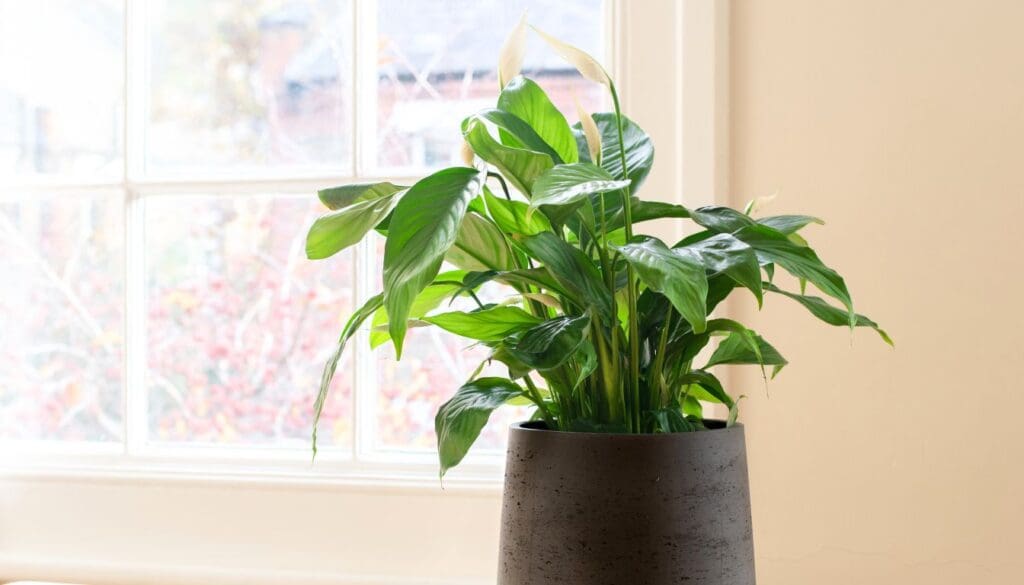
Though peace lilies can tolerate direct sun during the winters, that will be for a few hours. After that, you will have to protect them. You can move them a few feet away from the window if the sun is too hot and intense.
During the fall and winter months, they need low to moderate light. They continue dwelling in low light during the summers and springs, but you will need to give them bright indirect sunlight for good growth and abundant blooms.
Peace Lilies can grow under low lights also. But too low light will cause stunted growth.
However, you can use grow lights to give them adequate light to survive. Keep the light on for 12 to 14 hours. You can make it 16 to 18 in case of no additional sunlight, especially during cloudy weather.
Also read: What Kind Of Light Does A Peace Lily Need? (Peace Lily Light Requirements)
2. Provide infrequent deep watering with good quality water.

Watering the peace lilies depends on two things – the quality of water and quantity of water.
First, avoid using tap water. It contains chlorine, fluorine, bicarbonates, and other hard minerals, which affect the plant’s health. Consider using distilled water. You can collect rainwater and use it in the future.
If your only watering source is tap water, filter the water to get rid of the mineral content. If you do not have a filtering process, allow the water to sit outside for 24 hours. The minerals will evaporate into the air. This will make the water harmless and free from all hard minerals.
Daily watering is not needed. Maintaining a watering schedule is also not required. Every plant has different watering needs. Water your peace lily thoroughly once a week. This will keep the soil moist on other days of the week.
You should constantly check the moisture level of the soil. Poke your finger into the soil. If the top half part of the soil feels dry, you can water the plant. Lift the pot to feel the weight to understand if it needs water. However, unlike other houseplants, peace lily will show you wilted leaves when they need water.
The watering needs vary from season to season. During the hot summer seasons, Peace Lilies need more water due to the high evaporation rate. During the winters, you can decrease watering.
Allow the soil to dry up before you jump to the next watering session. Use room temperature or tepid water to water the Peace Lilies.
Also read: How Often Should A Peace Lily Be Watered? (Peace Lily Water Requirements)
3. Use soil that supports well drainage and moisture retention.

A good soil mix is essential to keep the Peace Lilies healthy. They need soil that can drain excess water and, at the same time, hold enough moisture for the absorption of water and minerals.
Avoid using two types of soil – clay soil and sandy soil. Clay soil holds moisture for a long time and drains water very slowly. This can cause overwatering issues.
On the other hand, sandy soil cannot hold moisture for long and drains water very quickly. The plant will not get enough time to absorb the water and nutrients. The soil, too, gets dry fast.
An ideal soil mix recipe for Peace Lilies would be a combination of:
- 5 parts perlite
- 3 parts activated charcoal
- 2 parts worm castings
- 5 parts coco coir
- 5 parts orchid bark
This soil mix will help in both drainage and moisture retention. It will also provide good nutrition.
If by any chance, your soil has high clay content, adding compost to the soil will help in draining the water fast. The same solution goes for sandy soil as it will help in moisture retention too.
Ensure that the pH level of the soil ranges between 5.8 and 6.5.
Also read: What Kind Of Soil To Use For Peace Lily? (Peace Lily Soil Mix)
4. Fertilize the peace lilies during the growing season.
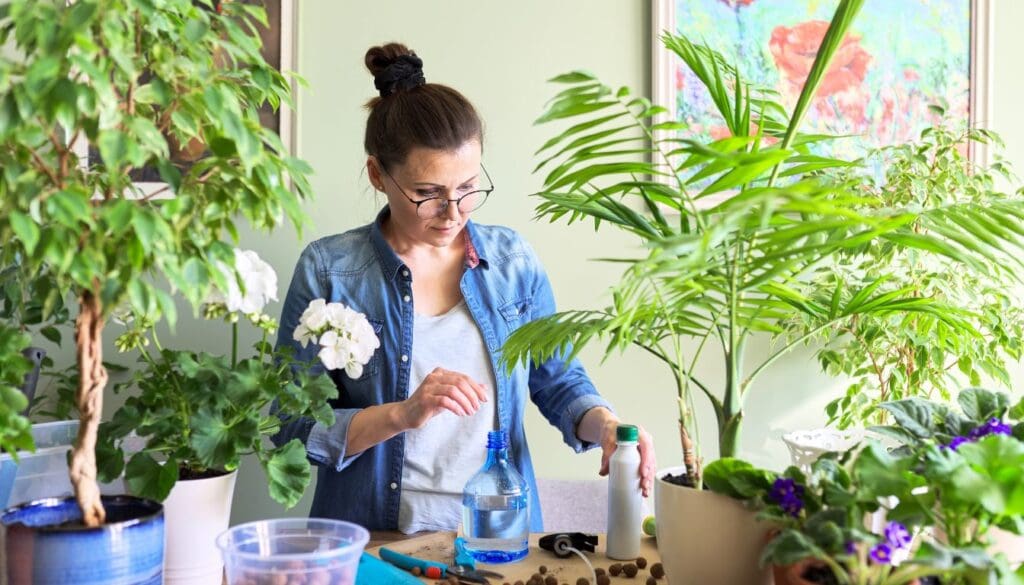
Peace lilies are light feeders when treated as houseplants. They do not need much fertilizer. But little fertilization is needed to promote healthy growth and prolific blooms. It is best to fertilize the plant during its growing and blooming seasons during the summers and spring.
Fertilizing them once or twice during their growing months will be best for them.
The best fertilizer for peace lilies is a liquid or water-soluble fertilizer. Use a balanced fertilizer (20-20-20) diluted with water, making the strength ½ or ¼. Ensure to water after fertilizing to spread the food around the roots.
Do not apply fertilizer in dry soil.
Also read: What Kind Of Fertilizer Does A Peace Lily Need? (Peace Lily Fertilizer Ratio)
5. Repot the Peace Lily every two or three years.

If you want your Peace Lily to remain healthy, repotting will help with that. Repotting once a year during the springtime will keep the roots healthy.
When the plant grows bigger than the pot, the root system suffocates due to a lack of space. They are unable to function correctly and fail to receive water and nutrients from the soil. Another reason is that the soil becomes acidic and loses nutrition as time goes by.
Peace lilies love to remain slightly root-bound, so you must wait for the plants to show signs of being root-bound, such as roots coming out of the drainage holes.
Repotting the plant during spring with fresh soil will give the plant fresh nutrition. It will help in keeping them healthy. The fresh soil mix will also improve the drainage system.
Repotting is also necessary when your plant is undergoing root rot. In such a situation, along with soil, the pot too must be changed to avoid infections due to rotting.
Avoid repotting too frequently as that can stress your peace lily.
Also read: Do Peace Lilies Like To Be Root Bound? (+When To Repot)
6. Use the correct sized pot for the Peace Lily.
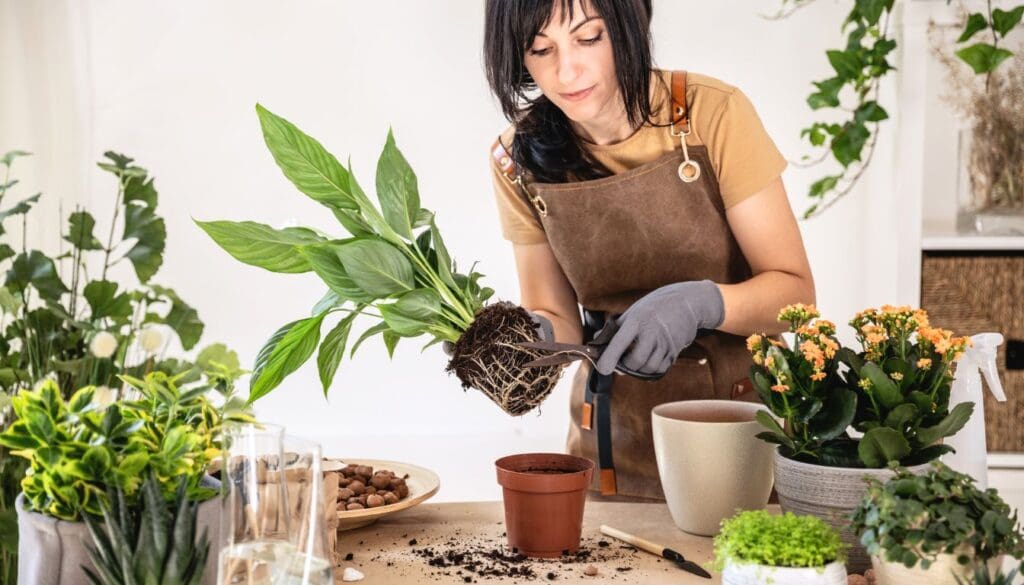
The pot’s size depends on the size of the plant. Whenever you are repotting your Peace Lily, keep pot size in mind. A smaller pot will not allow the roots to grow freely and flexibly, whereas a larger pot will cause overwatering issues.
While selecting a pot for the Peace Lily, choose a pot 1 to 2 inches bigger in diameter than the plant’s size. Peace Lilies will never require pots bigger than 10 inches.
For the material, you can opt for plastic, ceramic, or terracotta pots. Ensure that they have suitable drainage holes for draining out excess water.
Also read: What happens when you put a plant in too big of a pot.
7. Protect your peace lily, from cold drafts.
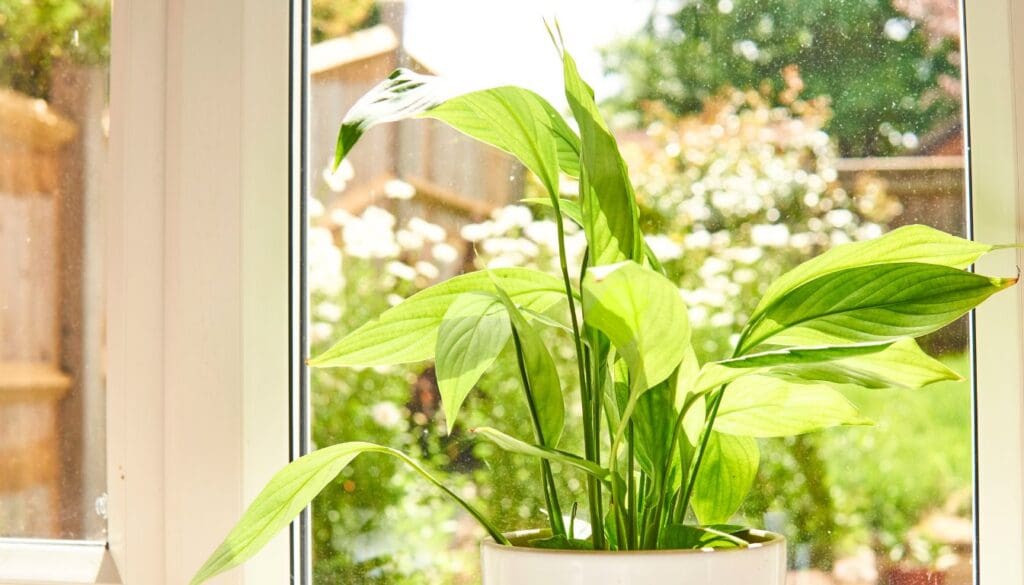
Hailing from tropical regions, Peace Lilies always prefer warm conditions more than being in the cold. Cold drafts cause several issues in the plant.
The ideal temperature for Peace Lilies ranges between 68°F-85°F during the day. During the night, it can go 10 degrees cooler than the day.
During the winters, you might have you alter the position of the peace lily. If you have kept them too near the window or door, chances of being affected by cold drafts increase. You have to either move your plant from that room or close the door and window.
Do not keep your peace lily in the balcony or near doors and windows that are frequently closed and opened as the drafts constantly enter and touch the plant.
Keep your peace lily far from heat vents and air conditioners. The dry, hot, or cold air can harm the plant. To save them from drafts, keep them in a room where warm indirect sunlight penetrates through the window.
Also read: What Temperature Is Best For Peace Lily? (Ideal Range+How To Maintain)
8. Peace Lilies prefer high humid conditions.
Peace lilies need high humidity to thrive. They require humidity above 60% to grow well. However, such high humidity may be uncomfortable for us indoors, but you must provide at least 50% humidity.
Keep your peace lily away from heating vents and ACs as the dry air released will make the plant lose all its moisture and humidity.
Maintain the humidity level by misting the plant regularly, using humidifiers, pebble trays, or terrarium jars.
You can alter their position by keeping them in a basement or bathroom. But the areas must have a good amount of light. You should never keep the plants in total darkness.
During summers, you might have to worry less about humidity as it remains high already. During the dry winters, you will have to maintain proper humidity.
Also read: Do Peace Lilies Need Misting? (+Ideal Humidity)
9. Spray neem oil once a month.
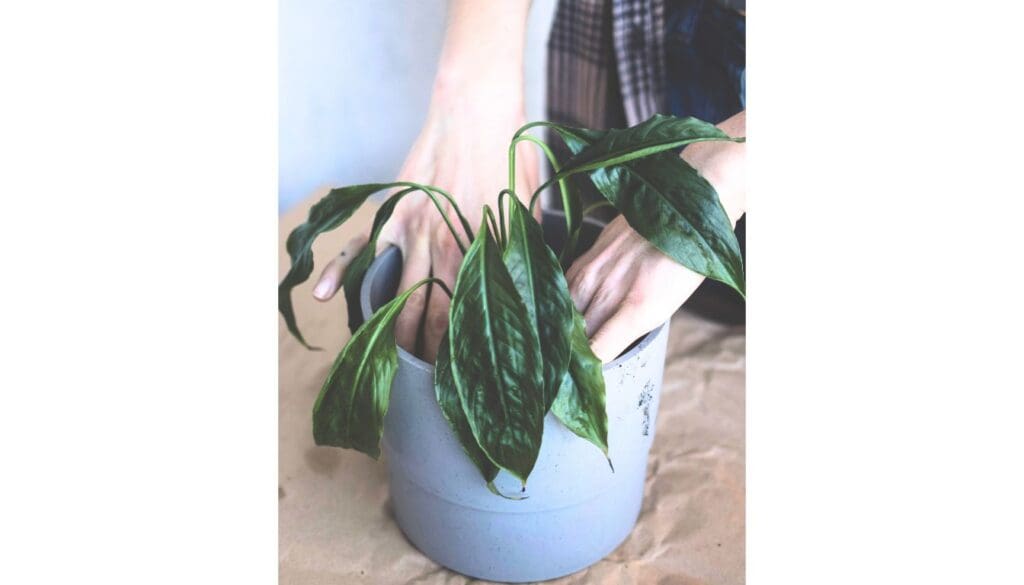
Generally, neem oil is used to treat pests and fungus infections in the Peace Lilies. Pests like mealybugs, aphids, spider mites, and scales are the common culprits in the plant.
If your plant got attacked by a pest or fungus, spraying neem oil regularly would help you get rid of them. It is entirely organic and will not harm your plant.
However, using neem oil once a month will keep your plant safe from pests and fungus. If there are any infestations already, neem oil will kill and prevent them from spreading. Other than cure, it can be used as a preventive measure too.
Also read: Do Peace Lily Attract Bugs? (Identification+How ToGet Rid Of Them)
10. Prune the Peace Lilies when needed.
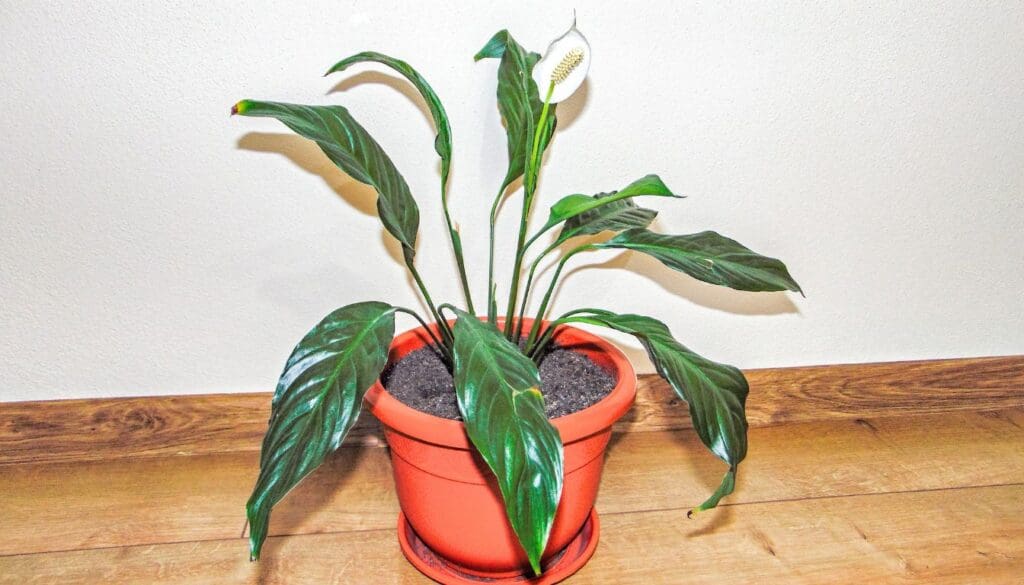
Peace Lilies need pruning to remain in good shape, healthy, bushy with dark green leaves and abundant blooms. Pruning also helps in keeping the pests and diseases away from the plant.
Generally, pruning the peace lily is done when the flowers fade or the plant grows too big and takes a lot of space. Pruning the dead leaves helps in keeping the plant in shape and provides more space for growth.
Removing the spent flowers will allow the plant to stimulate the growth hormone to grow new flowers. There is no specific time for pruning the Peace Lilies. The ideal time to prune the plant is whenever it is necessary.
Removing the spent flowers can be done during the late spring month when very few flowers are starting to fade or already faded.
Also read: How To Prune A Peace Lily? (When+Steps-By-Step Guide)
11. Propagate the Peace Lily to get more Peace Lilies.
If your Peace Lily is turning old or you want to grow more Peace Lilies, you can propagate them. Keep one thing in mind that these plants cannot be propagated by leaf or stem cuttings. You will have to propagate them by dividing the plant.
For propagating, choose a healthy, matured plant with crowns. A young plant will not have enough baby plants to be divided.
Gently take out the plant from the soil without disturbing the root ball. You can identify the baby plants by their size. While separating, be patient. The root structure should be maintained while dividing the babies.
Gently remove the soil from the roots. You will find one root as a connection between the babies and the mother. Cut the root carefully, without disturbing other roots.
While separating, make sure that it has a developed root system and a couple of leaves. Plant the division in a small pot with a good soil mix.
Keep them under indirect sunlight, water them well and take care of them as per their requirements. Once they start growing a little big, repot them in a slightly bigger pot.
You can also propagate Peace Lilies in water. You should change the water every week. Use liquid fertilizer to fertilize the water. Other requirements are the same as the ones in soil.
Final words
Even though they are adaptable and low-maintenance plants, little attention is needed to provide them with their basic needs to keep them strong and healthy.
Giving them bright indirect light, adequate watering, sufficient fertilizer, and taking care of their ideal temperature and humidity will not only help them survive, but they will thrive profusely along with their beautiful white spathes.
Repotting and pruning should be performed to keep the plant fresh and healthy.
Ref: ScienceDirect, NCBI, University of Vermont, Nationalgeographic, NC state university, University of Florida, The University of Arkansas, Queensland Government.
Recommended Garden Supplies
| Product Image | Our Recommended Gardening Supplies | Check Offers! |
|---|---|---|
Top Top
Top
Top
Top
Top
Top
Top
Top | rePotme Houseplant and Tropical Classic Potting Soil Mix | Check Offer On Amazon |
 Top
Top
Top
Top
Top
Top
Top
Top | Espoma Organic Indoor Plant Food | Check Offer On Amazon |
 Top
Top
Top
Top
Top
Top
Top
Top | GooingTop LED Grow Light 6000K Full Spectrum Clip Plant Growing Lamp | Check Offer On Amazon |
 Top
Top
Top
Top
Top
Top
Top
Top | Soil Moisture Meter | Check Offer On Amazon |
 Top
Top
Top
Top
Top
Top
Top
Top | Govee Hygrometer Thermometer, Bluetooth Enabled! | Check Offer On Amazon |
 Top
Top | LEVOIT Humidifiers for Large Room(Best For Plants) | Check Offer On Amazon |
 Top
Top
Top
Top
Top
Top
Top
Top | Upgraded DIY Automatic Drip Irrigation Kit, 15 Potted Houseplants Support | Check Offer On Amazon |
 Top
Top
Top
Top
Top
Top
Top
Top | Stainless Steel Heavy Duty Gardening Tool Set | Check Offer On Amazon |
 Top
Top
Top
Top
Top
Top
Top
Top | Bonide Insecticidal Soap | Check Offer On Amazon |
 Top
Top
Top
Top
Top
Top
Top
Top | Bonide 32 oz Spray Neem Oil for Organic Gardening | Check Offer On Amazon |
 Top
Top
Top
Top
Top
Top
Top
Top | Garden Safe Fungicide | Check Offer On Amazon |


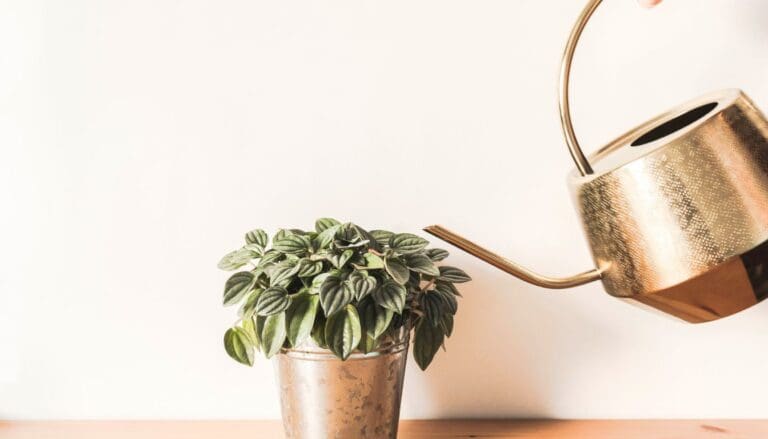




My plant is dying from the ends if the leaves turning brown. I repoted it with new pot and soul, got a safe insect killer for inside plants and it is in a north facing room. It is still dying and I want to save it so much. It was from my mom’s funeral. Please help
Hello Darla,
Hope you are doing good.
Brown leaf tips on a Peace Lily can be a sign of low humidity, over-fertilizing, or tap water with high fluoride or chlorine. Here’s what to do:
1) Trim the brown tips with clean scissors to tidy it up.
2) Use distilled or rainwater for watering if possible, or let tap water sit overnight before using.
3) Ensure the room has enough humidity; you might want to mist the plant or use a humidifier.
4) Hold off on fertilizing for now and give the plant time to settle in its new pot and soil.
Take these steps, and with some tender care, your Peace Lily can recover and flourish as a beautiful tribute to your mom.
Sending positive vibes to you and your plant! 🌱✨
I recently repotted a peace, lily and some of it is doing OK and is strong and repotting did fine but the other part is wilting and not taking to the soil looks like it’s dying off. I don’t know what to do with that part of the plant can you help me please.
Hi Tiffany,
Post-repotting wilt can happen. For the struggling part of your Peace Lily, first ensure it’s not over or underwatered—let the top inch of soil dry out before watering again. Also, check if it’s in bright, indirect light and not direct sun, which can be harsh. If the wilt persists, you might want to trim any dead or yellowing leaves. Give it some time, and with consistent care, it should perk up.
Keep the faith, your Peace Lily can bounce back! 🌱💧